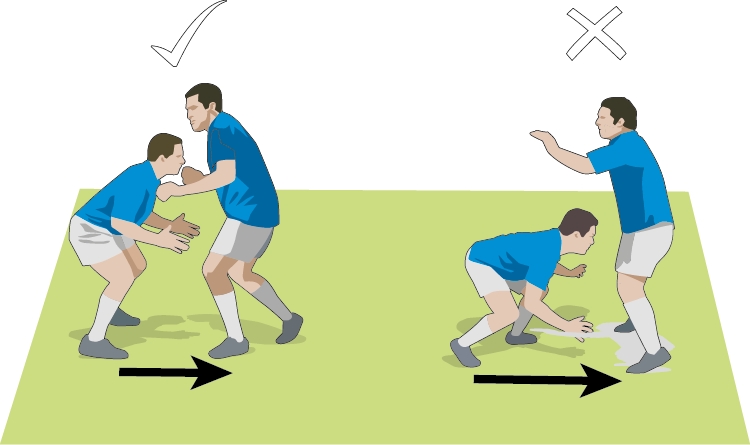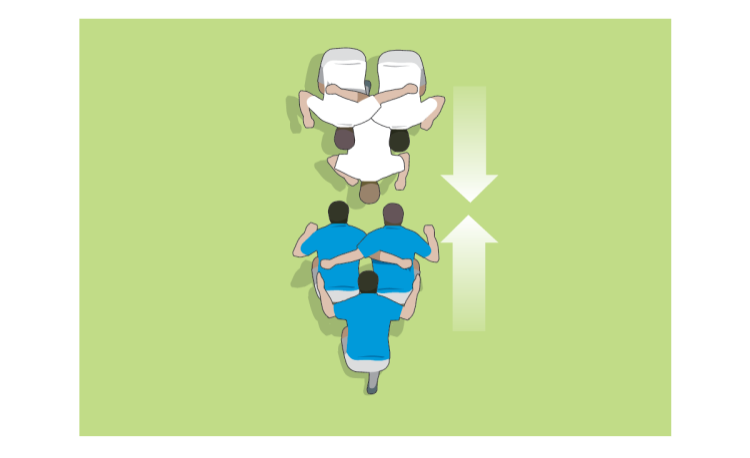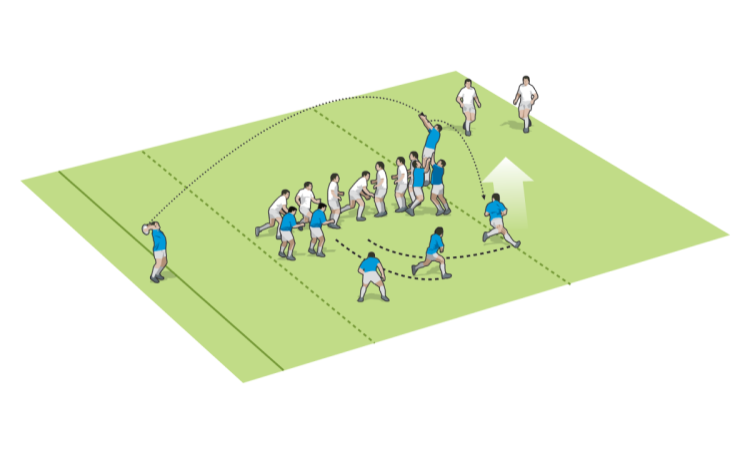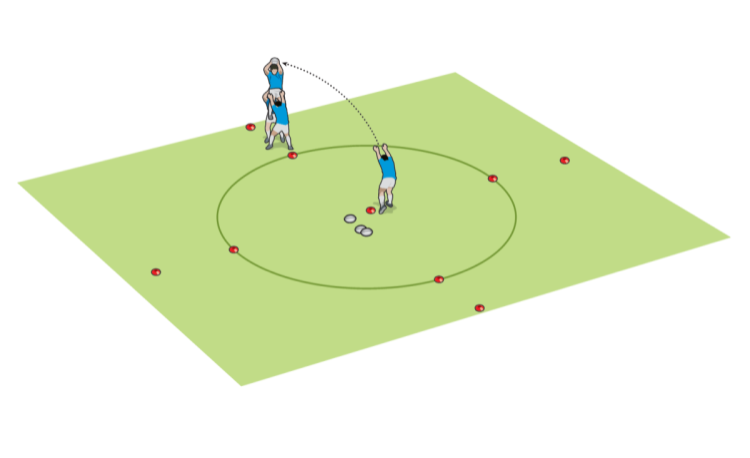You are viewing
1 of your 2 free articles
Front lifter ideal body and foot position
Scrums & Lineoutsby Dan Cottrell
Give the front jumper every chance to be lifted well by ensuring your front lifter has a strong base and chest close to the jumper.
The front lifter stands with his feet just over shoulder-width apart and level so he can provide a strong base for the jumper. The weight is off the heels.

From this position, as the jumper goes up, the lifter can get close and underneath the jumper. If he leans forward before the jump, then he’s in danger of leaning forward in the lift, losing height and strength.
The other advantage of this position is that the jumper is very close to the 5m line, allowing him more opportunity to get in front of the opposition front jumper.

Bath’s Dave Attwood takes the ball at the front of the line, with his front lifter chest out, arms straight, head neutral
Without completing the lift, the jumper and front lifter work together on the timing.
Check for excellent technique before bringing in the back lifter.
FOOT POSITIONS
The front lifter stands with his feet just over shoulder-width apart and level so he can provide a strong base for the jumper. The weight is off the heels.
BODY POSITIONS

- GOOD Chest up, closer to the jumper
- BAD Chest down, too far from the jumper
From this position, as the jumper goes up, the lifter can get close and underneath the jumper. If he leans forward before the jump, then he’s in danger of leaning forward in the lift, losing height and strength.
The other advantage of this position is that the jumper is very close to the 5m line, allowing him more opportunity to get in front of the opposition front jumper.

Bath’s Dave Attwood takes the ball at the front of the line, with his front lifter chest out, arms straight, head neutral
VIDEO
- The jumper goes almost straight up, not forward or backwards.
- To start the jump, the jumper makes a small counter movement with his knees. That is, he bends them a little before moving upwards. This acts as a trigger for the lifters.
- The front lifter has his chest up and out, moving the jumper up by straightening his legs, keeping his elbows bent.
- The front lifter does not shift his feet until the lift is completed. Only then does he manoeuvre the jumper.
- The lifter completes the lift on his toes.
PRACTICE
Without completing the lift, the jumper and front lifter work together on the timing.
Check for excellent technique before bringing in the back lifter.
Related Files
Vol-1-Issue-431-RCW-front-lifter-ideal-body-and-foot-position.pdfPDF, 27.6 MB
Newsletter Sign Up
Coaches Testimonials

Gerald Kearney, Downtown Las Vegas Soccer Club

Paul Butler, Florida, USA

Rick Shields, Springboro, USA

Tony Green, Pierrefonds Titans, Quebec, Canada
Subscribe Today
Be a more effective, more successful rugby coach
In a recent survey 89% of subscribers said Rugby Coach Weekly makes them more confident, 91% said Rugby Coach Weekly makes them a more effective coach and 93% said Rugby Coach Weekly makes them more inspired.
Get Weekly Inspiration
All the latest techniques and approaches
Rugby Coach Weekly offers proven and easy to use rugby drills, coaching sessions, practice plans, small-sided games, warm-ups, training tips and advice.
We've been at the cutting edge of rugby coaching since we launched in 2005, creating resources for the grassroots youth coach, following best practice from around the world and insights from the professional game.
More from us
© 2023 Rugby Coach Weekly
Part of Green Star Media Ltd. Company number: 3008779
We use cookies so we can provide you with the best online experience. By continuing to browse this site you are agreeing to our use of cookies. Click on the banner to find out more.













